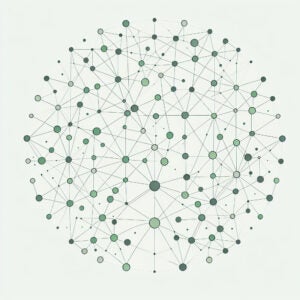 With digital audio consumption on the rise, advertiser expectations about targeting and buying advertisements are also growing fast.
With digital audio consumption on the rise, advertiser expectations about targeting and buying advertisements are also growing fast.
These concerns surfaced Thursday during Mediaocean’s “Radio Reinvented” panel in Manhattan. Panelists included executives from Pandora, Spotify and Triton Digital.
The panelists revealed there are 143 million monthly online radio listeners in the US, representing 53% of the population, up from 47% in 2014 and 27% in 2010. And this trend is widespread demographically.
“This isn’t just a phenomenon in the 18-to-24 or preteen world,” said Doug Sterne, VP of audio development and industry relations for Pandora.
But the main KPIs are click-through rates and length of engagement, which aren’t good enough for many advertisers. Les Hollander, senior director of US sales for Spotify, described how there are “a lot of conversations” among media buyers about how to “evolve those KPIs” beyond the basic click-through, and that they were seeking better ways to determine if an ad had engaged a listener.
John Rosso, president of marketing development for Triton Digital, was more blunt.
“Click-through rate is one of the worst ways to measure the performance of an audio campaign,” he said. The logic is obvious, he said: People listen to digital audio in a hands-free environment. But Rosso acknowledged that Triton has had “a hard time moving the market off of that.”
To this end, Sterne revealed that Pandora is working with the same data scientists who have helped develop its music genome algorithms to develop similar models that will allow the service to determine what kind of ad the listener wants to hear when and how many times. Sterne emphasized, though, that the development was still in its early stage and “not ready for prime time.”
So will marketers realistically commit more of their digital ad budgets to audio content without the same hard metrics of, say, digital display? So far, the answer seems to be yes.
“There’s already an incredible amount of demand from marketers against digital audio with the metrics that exist today,” Rosso told AdExchanger. “There won’t be a quantum leap, but the metrics are improving every day. … The question is, how do we bring all of the tools and techniques that are table stakes in digital media to digital audio?”
This effort to give agencies more audio options in their campaigns helped fuel the partnership launched March 9 between Mediaocean and Spotify, designed to allow agencies to compare audience data between Spotify, broadcast radio stations and other audio platforms, in order to better target or customize traditional and digital campaigns.
AdExchanger Daily
Get our editors’ roundup delivered to your inbox every weekday.
Daily Roundup
“The buyers have an easier time getting access to the audience,” said Cordie DePascale, VP of product and partner solutions for Mediaocean, at the time the partnership was announced.
This partnership underscores another challenge advertisers face in audio ad buying measurement: There are numerous streaming platforms to choose from, beyond Spotify and Pandora, which creates a fragmented environment for ad buyers.
“Large platforms like Google, Apple and Amazon recognize they have to be in that business if they’re going to remain relevant,” said Pandora’s Sterne. “They’re going to have streaming music content.”
There have been and will be more partnerships like the one between Mediaocean and Spotify, he said, in order to streamline the process of buying and measuring inventory across different audio platforms.
“We’re doing everything we can to make it as simple as possible,” Sterne said.
This is where automation – often synonymous with simplicity – comes to mind. While programmatic audio buying isn’t nearly as mature as programmatic display, stakeholders want to provide it.
“That’s where a lot of work is going to be done,” Rosso said. “There’s going to be a lot of marketing automation or supply chain automation. That’s coming for sure. It’s coming to radio, it’s coming to television and it’s already a big part of the cable business.”
It’s an enticing promise to couple audio platform data – Spotify and Pandora both have users’ gender, age, ZIP codes and listening habits – with impression-based buying in an exchange environment.
Already, “smart impression” buying informed by listener data points is happening. Triton’s Rosso estimated about 60% of the impressions the company works with could be considered smart. “Dumb [untargeted inventory] is decreasing in value and smart is rapidly increasing,” he said.
Unfortunately, automated audio buying might not resemble automated display buying, and it’s possible programmatic audio will lack that addressability.
“It’s a complicated supply chain,” Rosso said. “We’re going to see that tighten up in the coming years because of the efficiencies we’re going to derive from it, but it won’t be addressable audience targeting the way traditional programmatic is.”
Alex Palmer contributed to this story













